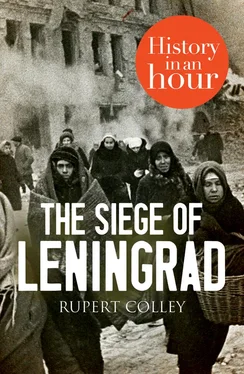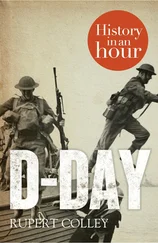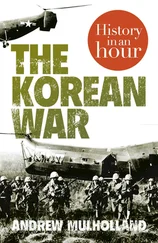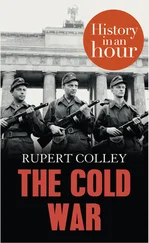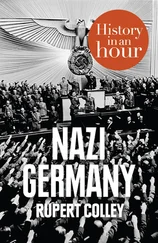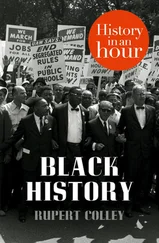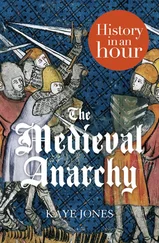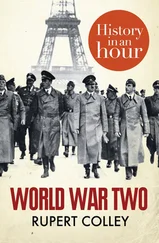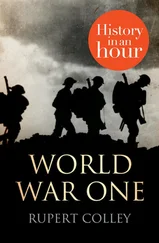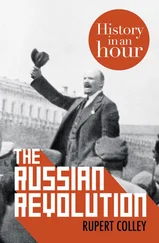Stalin next turned his vindictive attention to his military, purging his ablest field marshals and generals and decimating the officer corp. 40,000 Red Army personnel, deemed politically out of step, were purged. Amongst the victims were men who called for reform of the Soviet Union’s military methods, calls that were, on the whole, ignored. When war came, Stalin found himself bereft of his finest military thinkers. Nikita Khrushchev, Stalin’s successor, wrote in his memoirs, ‘There is no question that we would have repelled the Fascist invasion much more easily if the upper echelons of the Red Army command hadn’t been wiped out. They had been men of considerable expertise and experience.’
The Great Patriotic War Contents Cover Title Page The Siege of Leningrad History in an Hour Rupert Colley About History in an Hour Introduction The History of Leningrad The Great Patriotic War Preparing the City for War Evacuation The German Advance The Men in Charge Under Attack Hunger Death in a Cold City The Road of Life Spring 1942 The Symphony Leningrad Liberated The Aftermath Appendix 1: Key Players Appendix 2: Timeline of Siege of Leningrad Copyright Got Another Hour? About the Publisher Конец ознакомительного фрагмента. Текст предоставлен ООО «ЛитРес». Прочитайте эту книгу целиком, купив полную легальную версию на ЛитРес. Безопасно оплатить книгу можно банковской картой Visa, MasterCard, Maestro, со счета мобильного телефона, с платежного терминала, в салоне МТС или Связной, через PayPal, WebMoney, Яндекс.Деньги, QIWI Кошелек, бонусными картами или другим удобным Вам способом.
On 22 June 1941, Hitler launched Operation Barbarossa, Germany’s invasion of the Soviet Union, one of the largest and most ambitious attacks ever staged – over three million Axis troops attacked along a 900-mile front. What followed was the most destructive war in history; a war of annihilation.
For Hitler, the city of Leningrad held great symbolism, being the birthplace of Bolshevism; his objective was to raze it to the ground and render it uninhabitable. An hour before the attack in the early hours of 22 June, Hitler addressed his troops:
German soldiers, you are about to join battle – a hard and crucial battle. The destiny of Europe, the future of the German Reich, the existence of our nation, now lies in your hands alone.

Operation Barbarossa
Bundesarchiv, Bild 101I-186-0184-02A / Otto / CC-BY-SA
Stalin’s first act was to send Vyacheslav Molotov, his foreign minister, to announce the war to his people. Molotov’s radio broadcast, relayed across cities by loudspeaker eight hours after the initial attack, condemned this ‘act of treachery unprecedented in the history of civilized nations.’
On 3 July, in his first public address since the invasion, Stalin spoke of ‘The Great Patriotic War’. His usual political rhetoric, while still apparent, was played down. Instead, he spoke in patriotic terms, pulling together his people to defeat the beast that was now in their midst: ‘Comrades, citizens, brothers and sisters, men of our Army and Navy! My words are addressed to you, dear friends!’ he began. He continued, ‘The issue is one of life and death for the Soviet State, of life and death for the peoples of the USSR; the issue is whether the peoples of the Soviet Union shall be free or fall into slavery.’
Preparing the City for War Preparing the City for War Evacuation The German Advance The Men in Charge Under Attack Hunger Death in a Cold City The Road of Life Spring 1942 The Symphony Leningrad Liberated The Aftermath Appendix 1: Key Players Appendix 2: Timeline of Siege of Leningrad Copyright Got Another Hour? About the Publisher Конец ознакомительного фрагмента. Текст предоставлен ООО «ЛитРес». Прочитайте эту книгу целиком, купив полную легальную версию на ЛитРес. Безопасно оплатить книгу можно банковской картой Visa, MasterCard, Maestro, со счета мобильного телефона, с платежного терминала, в салоне МТС или Связной, через PayPal, WebMoney, Яндекс.Деньги, QIWI Кошелек, бонусными картами или другим удобным Вам способом.
As soon as war was announced, Leningrad was placed under martial law. The writer Lidiya Ginzburg described the immediate change of atmosphere within the city:
Less than half an hour had passed and we were already being borne away inexorably from our pre-war emotional cast of mind. [We had] a feeling . . . that this life was coming to an end.
On 27 June, Andrei Zhdanov, Stalin’s man in Leningrad, issued orders for the mobilization of the city’s population to bolster its defences. Unless sick, pregnant, caring for infants, or otherwise engaged by the city authorities or the military, all men aged between sixteen and fifty, and women between sixteen and forty-five were called up. They were to work for seven days followed by four days’ rest when they would be expected to return to their normal jobs or studies. In August the age range was extended – up to fifty-five for men and fifty for women. Work shifts were increased too – seven days work, then one day of rest.
‘Everyone to the defence of Leningrad’, Kazan Cathedral, October 1941
RIA Novosti archive, image #637354 / Anatoliy Garanin / CC-BY-SA 3.0
But in practice, these guidelines were never adhered to. One woman of fifty-seven years of age, wrote of eighteen-day shifts, twelve hours a day hacking at ground ‘as hard as rock’. Few were accustomed to such strenuous, unrelenting work. Teenage girls with soft hands would turn up wearing summer dresses and sandals and were expected to dig and manoeuvre concrete blocks using just their hands and a crowbar. People always reported for work either out of patriotic duty or because the penalties for failing to do so were too harsh to contemplate. Occasionally the workers were subjected to enemy bombs or strafing (a machine-gun attack fired from low-flying German fighter planes).
Up to half a million civilians turned out to various points on the outskirts of the city to construct three fortified rings – the furthest, 70 miles west of the city, ran along the River Luga. Their efforts produced 650 miles of trenches, 430 miles of anti-tank ditches, over 5,000 concrete gun emplacements (or pillboxes), and 370 miles of barbed-wire entanglements.
It was a valiant effort but many resented the amount of labour, believing that when the Germans came they would simply overrun these defences. Their cynicism was well founded – the advance of the Germans continued unabated. Having stormed through the Baltic States, the German war machine seemed unstoppable. Stalin’s speech on 3 July had extolled ‘all citizens of the Soviet Union [to] defend every inch of Soviet soil, [and] fight to the last drop of blood for our towns and villages.’ Taking his cue, Zhdanov announced the formation of a ‘People’s Volunteers’ Militia’ within Leningrad. Again, either through patriotism or through coercion, thousands answered the call. Age and health was no barrier – one sickly man in his late fifties was told, ‘Your state of health is of no significance, what is important is the very act of volunteering and thereby displaying one’s political attitude.’ Another, hoping to avoid this voluntary conscription was told, ‘You are a Soviet man – you cannot refuse to volunteer. I advise you not to refuse.’ By the end of August 1941, 160,000 Leningraders, 32,000 of them women, had volunteered.
Читать дальше
